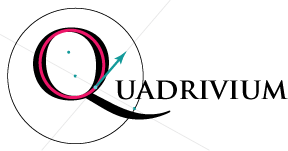
References for Mathematical Intentions, alphabetically by author
List of references, organized by subject
Documentary and feature films
Alphabetical list
Apollonius of Perga. (2002). Conics Book IV. Green Lion Press.
Apollonius of Perga, & Donahue, W. H. (1998). Conics (Revised.). Green Lion Press.
Apollonius of Perga, & Heath, T. L. (2003). Treatise on Conic Sections. Martino Publishing.
Appleyard, B. (1994). Understanding the Present: Science and the Soul of Modern Man. Anchor.
Arnol'd, V. I. (2004). Huygens and Barrow, Newton and Hooke (1st ed.). Birkhäuser Basel.
Artobolevskii, I. (1964). Mechanisms for the Generation of Plane Curves. Macmillan.
Beik, W. (1989). Absolutism and Society in Seventeenth-Century France: State Power and Provincial Aristocracy in Languedoc. Cambridge University Press.
Bercé, Y. (1990). History of Peasant Revolts: The Social Roots of Rebellion in Early Modern France. Cornell University Press.
Berggren, L. (2003). Episodes in the Mathematics of Medieval Islam. Springer.
Bishop, M. (1936). Pascal, the life of genius, Reynal & Hitchcock.
Boyer, C. B. (2004). History of Analytic Geometry (Unabridged.). Dover Publications.
Boyer, C. B., & Merzbach, U. C. (1991). A History of Mathematics, Second Edition (2nd ed.). Wiley.
Cajori, F. (1916). William Oughtred, a Great Seventeenth-Century Teacher of Mathematics. Chicago: Open Court Publishing Company.
Cajori, F. (1919a). A History of the Conceptions of Limits and Fluxions in Great Britain, from Newton to Woodhouse. Open court series of classics of science and philosophy, no. 5. Chicago: The Open Court Publishing Company.
Cajori, F. (1919b). A History of Mathematics (2nd ed.). New York: The Macmillan company.
Cajori, F. (1920). On the History of Gunter's Scale and the Slide Rule Duringthe Seventeenth Century. University of California publications in mathematics, v. 1,no. 9. Berkeley: University of California press.
Cajori, F. (1924). A History of Elementary Mathematics, with Hints on Methods of Teaching (Rev. and enl. ed.). New York: Macmillan.Cajori, F. (1928). A History of Mathematical Notations. Chicago, Ill: The Open court publishing company.
Cajori, F. (1929). Controversies on Mathematics Between Wallis, Hobbes, and Barrow. The Mathematics Teacher, XXII(3), 146-151.
Cajori, F. (1962). A History of Physics in Its Elementary Branches (through 1925): Including the Evolution of Physical Laboratories (Rev. and enl. ed.). New York: Dover Publications.
Calinger, R. S. (1994). Classics of Mathematics. Prentice Hall.
Calinger, R. S. (1999). A Contextual History of Mathematics. Prentice Hall.
Coolidge, J. L. (1945). A History of the Conic Sections and Quadric Surfaces (1st ed.). Clarendon Press.
Courant, R., & Robbins, H. (1996). What Is Mathematics? An Elementary Approach to Ideas and Methods (2nd ed.). Oxford University Press, USA.
Delumeau, J. (1990). Sin and Fear: The Emergence of the Western Guilt Culture, 13th-18th Centuries. Palgrave Macmillan.
Dennis, D. (1995). Historical Perspectives for the Reform of Mathematics Curriculum: Geometric Curve Drawing Devices and their Role in the Transition to an Algebraic Description of Functions (Ph.D. dissertation). Cornell University.
Dennis, D. (1996). Appendix to "The Creation of Continuous Exponents".
Dennis, D. (1997a). Drawing Logarithmic and Exponential Curves with the Computer Software Geometer's Sketchpad: A Method Inspired by Historical Sources. In D. Schattschneider & J. King (Eds.), Geometry Turned On: Dynamic Software in Learning, Teaching, and Research (pp. 147-156). Washington, D.C.: The Mathematical Association of America.
Dennis, D. (1997b). Rene Descartes' Curve-Drawing Devices: Experiments in the Relations Between Mechanical Motion and Symbolic Language. Mathematics Magazine, 70(3), 163-174.
Dennis, D. (1998). Geometric Curve Drawing Devices as an Alternative Approach to Analytic Geometry: An Analysis of the Methods, Voice, and Epistemology of a High School Senior. In R. Lehrer & D. Chazan (Eds.), Designing Learning Environments for Developing Understanding of Geometry and Space (pp. 297-318). Routledge.
Dennis, D. (1999). The Role of Historical Studies in Mathematics and Science Educational Research. In A. E. Kelly & R. A. Lesh (Eds.), Handbook of Research Design in Mathematics and Science Education (1st ed.). Routledge.
Dennis, D., & Confrey, J. (1995). Functions of a Curve: Leibniz's Original Notion of Functions and Its Meaning for the Parabola. The College Mathematics Journal, 26(2), 124-131.
Dennis, D., & Confrey, J. (1996). The Creation of Continuous Exponents: A Study of the Methods and Epistemology of John Wallis. In A. H. S. A. E. D. J. Kaput (Ed.), Research in Collegiate Mathematics Education, CBMS Issues in Mathematics Education (Vol. 6). American Mathematical Society.
Dennis, D., Kreinovich, V., & Rump, S. M. (1998). Intervals and the Origins of Calculus. Reliable Computing, 4(2), 191-197.
Densmore, N. B. D. (2003). Newton's Principia: The Central Argument (3rd ed.). Green Lion Press.
Descartes, R. (1925). The geometry of Rene Descartes. (D. E. Smith & M. L. Latham, Trans.). Chicago: Open Court Publishing Company.
Descartes, R. (1954). The Geometry of Rene Descartes. Dover Publications, Inc.
Descartes, R. (1993). Discourse on the Method of Rightly Conducting One's Reason and of Seeking Truth in the Sciences. Retrieved from http://www.gutenberg.org/etext/59
Descartes, R. (2007). Discourse on Method and Meditations on First Philosophy. BN Publishing.
Edwards, C. (1994). The Historical Development of the Calculus. Springer.
Euclid. (2002). Euclid's Elements. (D. Densmore, Ed., T. L. Heath, Tran.). Green Lion Press.
Euclid. Euclid's Elements, Introduction. (Joyce, David E., Tran.). http://aleph0.clarku.edu/~djoyce/java/elements/elements.html
Euler, L. (1988). Introduction to Analysis of the Infinite: Book I (1st ed.). Springer.
Euler, L. (1989). Introduction to Analysis of the Infinite: Book II (1st ed.). Springer.
Euler, L. (1738). Einleitung zur Rechenkunst. http://www.math.uni-bielefeld.de/~sieben/euler/rechenkunst.html
Euler, L. (1822). Elements of algebra. (J. Hewlett, Tran.) (3rd ed.). London: Longman, Hurst, Rees, Orme and Co.
Flinn, M. W. (1985). The European Demographic System, 1500-1820. The Johns Hopkins University Press.
Foucault, M. (1980). Power/Knowledge: Selected Interviews and Other Writings, 1972-1977. Vintage.
Foucault, M. (1995). Discipline & Punish: The Birth of the Prison. Vintage.
Foucault, M. (2001). Order of Things: An Archaeology of the Human Sciences (2nd ed.). Routledge.
Gill, M., & Montagnon, P. (2006). Civilisation: The Complete Series. BBC Warner.
Greenaway, Peter (2008), Rembrandt's J'Accuse.
Hall, L. M. (1992). Trochoids, Roses, and Thorns---Beyond the Spirograph. The College Mathematics Journal, 23(1), 20-35.
Henderson, D. W., & Taimina, D. (2004). Experiencing Geometry (3rd ed.). Prentice Hall.
Hsia, P. (1992). Social Discipline in the Reformation: Central Europe 1550-1750. Routledge.
Huff, T. E. (2003). The Rise of Early Modern Science: Islam, China and the West (2nd ed.). Cambridge University Press.
Hughes, K. (2003). Cromwell. Sony Pictures.
Hutchins, R. M. (Ed.). (1952). Great Books of the Western World Vol. 11 Euclid, Archimedes, Apollonius of Perga, Nicomachus. Encyclopaedia Britannica.
Isbell, L. A. (2009). The Fruit, the Tree, and the Serpent: Why We See So Well. Harvard University Press.
Joseph, G. G. (2010). The Crest of the Peacock: Non-European Roots of Mathematics (3rd ed.). Princeton University Press.
Katz, V. J. (2008). History of Mathematics, A (3rd ed.). Addison Wesley.
Katz, V. J., Imhausen, A., Robson, E., Dauben, J. W., Plofker, K., & Berggren, J. L. (2007). The Mathematics of Egypt, Mesopotamia, China, India, and Islam: A Sourcebook. Princeton University Press.
Klaits, J. (1987). Servants of Satan: The Age of the Witch Hunts. Indiana University Press.
Klein, J. (1992). Greek Mathematical Thought and the Origin of Algebra. Dover Publications.
Kline, M. (1982). Mathematics: The Loss of Certainty. Oxford University Press, USA.
Leibniz, G. W. (1920). The Early Mathematical Manuscripts of Leibniz. Chicago, London: The Open court publishing company.
Lenard, A. (1994). Kepler Orbits More Geometrico. The College Mathematics Journal, 25(2), 90-98.
Lenoir, T. (1979). Descartes and the geometrization of thought: The methodological background of Descartes' géométrie. Historia Mathematica, 6(4), 355-379.
Maanen, J. V. (1992). Seventeenth Century Instruments for Drawing Conic Sections. The Mathematical Gazette, 76(476), 222-230.
Mahoney, M. S. (1994). The Mathematical Career of Pierre de Fermat, 1601-1665 (2nd ed.). Princeton University Press.
Malone, A. (2007). The Ascent of Man. Ambrose Video Publishing, Inc.
Maravall, J. A. (1986). Culture of the Baroque: Analysis of a Historical Structure. Univ of Minnesota Pr.
Marin, L. (1988). Portrait of the King. Univ of Minnesota Pr.
Merchant, C. (1990). The Death of Nature: Women, Ecology, and the Scientific Revolution. HarperOne.
Munck, T. (2005). Seventeenth-Century Europe, Second Edition: State, Conflict and Social Order in Europe 1598-1700 (2nd ed.). Palgrave Macmillan.
Newton, I. (1934). Sir Isaac Newton's Mathematical Principles of Natural Philosophy and His System of the World. Berkeley, Calif: University of California Press.
Newton, I. (1967). The Mathematical Papers of Isaac Newton (Vols. 1-7, Vol. 1). Cambridge: Cambridge U.P.
Newton, I. (1968). The Mathematical Papers of Isaac Newton (Vols. 1-7, Vol. 2). Cambridge: Cambridge U.P.
Newton, I. (1975). The Mathematical Principles of Natural Philosophy and His System of the World. Berkeley: University of California Press.
Parker, G. (1996). The Military Revolution: Military Innovation and the Rise of the West, 1500-1800 (2nd ed.). Cambridge University Press.
Pascal, B. (2010). Pensées. Nabu Press.
Pedoe, D. (1983). Geometry and the Visual Arts. Dover Publications.
Richards, J. L. (1988). Mathematical Visions: The Pursuit of Geometry in Victorian England. Academic Pr.
Row, T. S. (2008). Geometric Exercises in Paper Folding. BiblioBazaar.
Schooten, F. V. (2009). Exercitationum Mathematicarum (1656). Kessinger Publishing, LLC.
Scott, J. F. (1981). The Mathematical Work of John Wallis (2nd ed.). American Mathematical Society.
Shapin, S., & Schaffer, S. (1986). Leviathan and the Air Pump: Hobbes, Boyle, and the Experimental Life. Princeton Univ Pr.
Smith, D. E. (1984). A Source Book in Mathematics. Dover Publications.
Smith, E., Dennis, D., & Confrey, J. (1992). Rethinking Functions, Cartesian Constructions. In The History and Philosophy of Science in Science Education. Presented at the Second International Conference on the History and Philosophy of Science and Science Education, Kingston, Ontario: The Mathematics, Science, Technology and Teacher Education Group; Queens University.
Stedall, J. (2008). Mathematics Emerging: A Sourcebook 1540 - 1900. Oxford University Press, USA.
Straker, S. M. (1985). What is the history of theories of perception the history of? In M. Osler & P. Farber (Eds.), Religion, Science, and Worldview: Essays in Honor of Richard S. Westfall. New York: Cambridge University Press.
Struik, D. J. (1986). A Source Book in Mathematics, 1200-1800. Princeton Univ Pr.
Turnbull, H. (. (1960). Correspondence of Isaac Newton, Volume II: 1676-1687.
Vega, G. F. V. (1948). Seven place logarithmic tables of numbers and trigonometrical functions. New York: Hafner Publishing Co.
Wallis, J. (1972). Opera Mathematica / Scriba, Christoph J.
Wallis, J. (2004). The Arithmetic of Infinitesimals: John Wallis 1656. (J. Stedall, Tran.) (1st ed.). Springer.
Wertheim, M. (1997). Pythagoras's Trousers: God, Physics, and the Gender War. W. W. Norton & Company.
Westfall, R. S. (1980). Never at rest. Cambridge [Eng].: Cambridge University Press.
Westfall, R. S. (1994). The Life of Isaac Newton. Cambridge [England]: Cambridge University Press.
Westfall, R. S. (1978). The Construction of Modern Science: Mechanisms and Mechanics. Cambridge University Press.
Whiteside, D. T. (1960). Patterns of mathematical thought in the later 17th century. Archive for History of Exact Sciences, 1, 179-388.
Whiteside, D. T. (1961). Newton's Discovery of the General Binomial Theorem. The Mathematical Gazette, 45(353), 175-180.
Whitman, E. A. (1943). Some Historical Notes on the Cycloid. The American Mathematical Monthly, 50(5), 309-315.
| Mathematical Intentions |
Measuring the World |
Contact us |
Last updated August 20, 2010
Copyright 2009 David Dennis and Susan Addington. All rights reserved.
